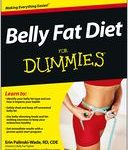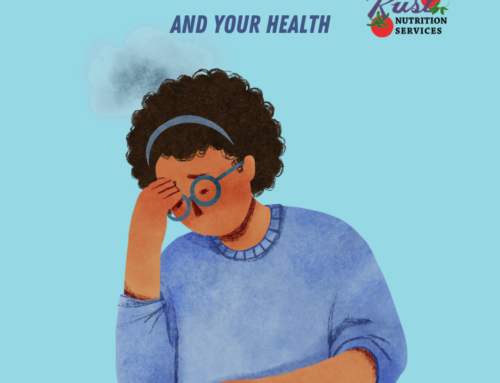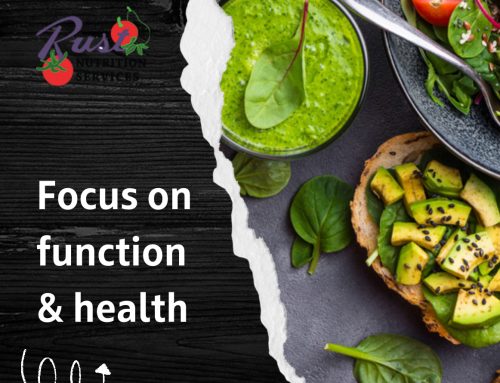My colleague, Erin Palinski-Wade, just authored a new book in the For Dummies series: Belly Fat Diet For Dummies®. As a registered dietitian, she’s not just knowledgeable about food and nutrition but she’s also not going to sell you a bill of goods. No quick fix nonsense. This book is filled with fact and useful information that will improve your health while you flatten your tummy. 
I recently had the chance to chat with her:
Rosanne: I love the way the book offers ways to measure the body, without the scale – Yet the scale is still an important tool in weight management. How often do you suggest folks step on it to check themselves?
Erin: Yes, the scale is still important, but when starting the Belly Fat Diet For Dummies, you may notice results in more than just one way, such as loss of inches around your waistline. As for the scale, I recommend weighing only one time per week. Weighing too often can be discouraging, since day to day water shifts, etc, can impact the number you see on the scale.
Rosanne: I also love that you provide realistic recommendations and talk about body shapes. What can you tell me about how body shape and age impacts belly fat?
Erin: All body shapes can hold onto dangerous belly fat, however those that are “apple” shaped are more prone to holding onto excessive belly fat. Even a relatively thin apple-shaped person can have too much belly fat, which can increase disease risk, such as type 2 diabetes and heart disease. If you are apple-shaped, it is even more important to monitor your waist to hip ratio and determine your risk factors to see if you are holding onto excessive belly fat. Even if your BMI does not say you are at risk, if you are apple shaped, especially after age 40, you will want to use alternative measurements, such as your waist circumference, to monitor your risk. The book shows you how.
Rosanne: The book does a great job at helping people assess their overall health and disease risk factors. So while the book is titled “Belly Fat Diet For Dummies” it’s important to note it’s not a magical potion! Can everyone achieve a flat belly, or is the goal “less belly”?
Erin: Of course everyone dreams of those “perfect 6 pack abs” but the truth is, you have to have very little body fat to achieve a true six pack, and that may not be realistic for everyone. However, a 6-pack isn’t the only way to have a nice stomach. A flat stomach can be achieved without being completely chiseled, but the ultimate goal of the Belly Fat Diet For Dummies is to achieve a smaller belly and thinner waistline to improve health and cut disease risk.
Rosanne: Right! I always joke that I have that 6-pack under there, you just can’t see it…So many diets are gimmicky. How is your Belly Fat Diet different than others, and what are the basic principles of a Belly Fat Diet?
Erin: What’s great about the Belly Fat Diet For Dummies is that it isn’t really a diet. A “diet” is something you go on, only to go off again, and right back to the old habits that caused the gain weight in the first place. The Belly Fat Diet For Dummies focuses on making true lifestyle changes that you can stick with. You don’t have to be perfect with this plan – in fact I don’t want you to be perfect. That’s not realistic. Instead I focus on my 80/20 rule to maintain your weight loss – where you are on track 80% of the time, and 20% of the time allows for splurges. I also include a detailed maintenance program for helping you to keep your results once and for all!
Rosanne: I love the 80/20 rule for eating! What advice can you give to middle aged women who are used to eating more carbohydrates, and less protein? How can folks work on changing their food preferences?
Erin: Everyone has their own food preferences, and you don’t have to change these entirely. But if you realize that you tend to eat many processed, refined grains and understand how these can actually make you hungrier and pack on belly fat, you can start to look for better options that you can enjoy just as much. There is no need to give up carbohydrates on this plan, but you do want to choose the right type – whole grains are encouraged throughout your Belly Fat Diet plan, however processed, white flour products should be avoided. Lean protein is much more filling than refined grains and actually takes more calories to digest, helping you to not only control your portions, but also provides a slight metabolism boost. Eating less processed foods and transitioning to foods that actually keep you feeling satisfied (whole grains and lean proteins) helps increase energy, decrease bloat, and makes you want to stay on track to continue to feel great and see results!
Rosanne: It’s all about staying full longer with less refined foods. Say someone is used to an afternoon snack of pretzels or a banana. What are some examples of better belly-fat-fighting snacks?
Erin: Bananas are actually good for fighting against belly bloat. Not only are they a great source of filling fiber, but they also contain a high amount of potassium, which helps your body shed excess water weight (which can make your belly look and feel bloated). Pretzels are typically loaded with refined carbohydrates and salt – two major belly bloaters. Instead, air-popped popcorn is a great alternative since it is naturally whole grain, low calories, and low sodium (when air popped). The Spicy Air-Popped Popcorn in the book shows you how to make this salt-free popcorn even if you don’t own an air-popper!
Rosanne: Ok, keep the banana, ditch the pretzels. What role does stress management play in diet success?
Erin: Stress, both physical and emotional, can pack on belly fat. When you are under stress, your body releases stress hormones, like cortisol and adrenaline. These hormones actually cause your body to store fat, especially in your midsection – leading to excessive belly fat.
Rosanne: So it’s important for folks to seek out ways to manage stress – exercise, a yoga class, some “me-time”. Chapter 5 offers some simple ways to incorporate stress-reducing activities into your day. You also mention the Glycemic Index in chapter 5. Part of this approach is choosing carbohydrates with a low GI index, but also including adequate protein (“the hunger fighter”, chapter 6) with meals. Sometimes folks don’t get adequate protein early in the day. What are some quick and easy ways to add more protein to breakfast?
Erin: You can add protein in many ways. Eggs are always an option and hard boiled or the 90-second omelet in the book are super fast and easy. But don’t forget about cottage cheese with fruit, Greek yogurt (you can even make this into a smoothie!), and low fat string cheese as quick options as well. You can even use beans for breakfast by making the Breakfast Burrito recipe in the book in advance and heating it up quickly in the morning when you are ready!
Rosanne: Great! Thanks Erin. We have a low GI breakfast burrito in our cookbook as well. Sometimes one of the biggest challenges to dietary change is getting out of a rut.

You can purchase the Belly Fat Diet For Dummies at Amazon or at a bookstore near you. Get a copy before the holidays! For more information, be sure to check out the whole Belly Fat Diet Blog Tour this month:
Belly Fat Diet Blog Tour Schedule
The “Belly Fat Diet For Dummies” blog tour will begin on November 6th making 6 tour stops including interviews, giveaways, and recipes. The tour will wrap up on November 27th at 6pm EST with a live interactive web-based chat with author Erin Palinski-Wade.
November 6th Tuesday- Recipe with Diva Dietitian Blog
November 7th Wednesday- Interview with Chew the Facts
November 8th Thursday- Book Review by Healthy Mom Magazine Blog
November 8th Thursday- Recipe with Fat Fighter TV
November 9th Friday- Review and Giveaway with Appetite for Health
November 13th Tuesday- Interview and Giveaway with Around the Plate
November 27th Tuesday- 6:00PM EST- Live interactive web-based chat with the author at Shindig Events




